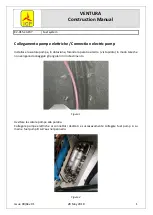
User manual / Handbuch / Navod k obsluze
Gii 4
RESERVE DEPLOYMENT
Before each flight, check that the pins and handle are
located correctly.
2.2. Adjusting the harness
1) Lumbar Adjustment
An excessively reclined position reduces stability and increases
the risk of risers twisting in the event of a spin.
2) Shoulder Strap Adjustment
For optimum comfort during take-off and ease of achieving
your preferred flying position the shoulder straps should not
be excessively tight. The straps may appear loose while in the
seated position but some play is required to avoid excessive
strap pressure in the standing position.
3) Main Chest Strap Adjustment
Tightening the chest strap increases the efficiency of the Auto
Balance System (ABS, i.e. stabilising system) but decreases the
roll response of the wing. With increased tightening, the pilot
may feel more stable in turbulent conditions and the wing will be
more stable in the event of an asymmetric collapse. However,
the wing may be less inclined to bank when turning. The design
of the integrated ABS allows for good stabalization throughout
the adjustment range.
WARNING!
After installation of a reserve parachute in the harness, it is
absolutely essential to do a simulated deployment under
a static swing, ensuring that the parachute release system
operates correctly and the parachute comes out easily. The
elastic cords which close the reserve pocket must be checked
regularly. If the cord is worn, it must be replaced. Each time
a reserve parachute is installed, check that the cord is in good
order by applying a load of 10 kg.
2
1
3
Locate the pins in their corresponding colour coded loops and
be sure to remove the packing line! Stretch the rubber O-ring
over the pin.
4
Complete the sequence by locating the pins and handle under
the neoprene flap and secure with the velcro flap.
5
9




































